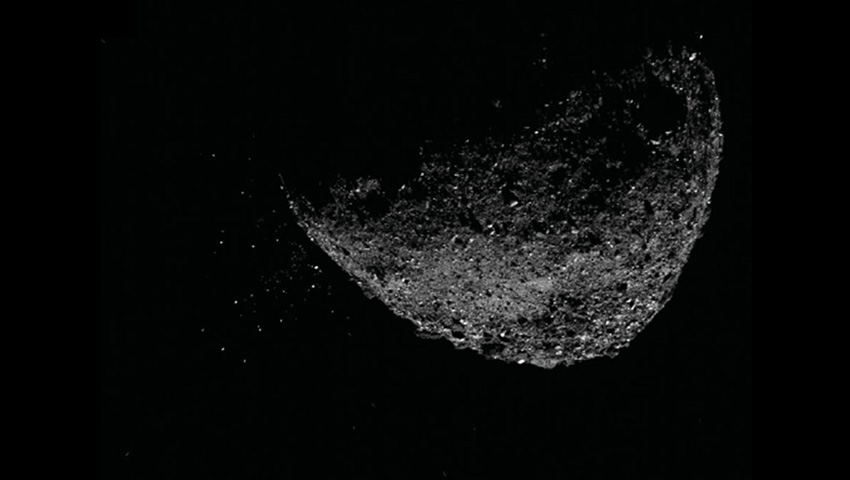The ongoing examination of Bennu – and its sample that will eventually be returned to Earth – could potentially shed light on why this intriguing phenomenon is occurring.
The OSIRIS-REx team first observed a particle-ejection event in images captured by the spacecraft's navigation cameras taken on 6 January, just a week after the spacecraft entered its first orbit around Bennu.
At first glance, the particles appeared to be stars behind the asteroid, but on closer examination, the team realised that the asteroid was ejecting material from its surface. After concluding that these particles did not compromise the spacecraft's safety, the mission began dedicated observations in order to fully document the activity.
Dante Lauretta, OSIRIS-REx principal investigator at the University of Arizona in Tucson, said, "Among Bennu's many surprises, the particle ejections sparked our curiosity, and we've spent the last several months investigating this mystery. This is a great opportunity to expand our knowledge of how asteroids behave."
After studying the results of the observations, the mission team released their findings in a Science paper published 6 December. The team observed the three largest particle-ejection events on 6 and 19 January, and 11 February, and concluded that the events originated from different locations on Bennu's surface.
The first event originated in the southern hemisphere, and the second and third events occurred near the equator. All three events took place in the late afternoon on Bennu.
The team found that, after ejection from the asteroid's surface, the particles either briefly orbited Bennu and fell back to its surface or escaped from Bennu into space.
The observed particles traveled up to 10 feet (three metres) per second, and measured from smaller than an inch up to four inches (10 centimetres) in size. Approximately 200 particles were observed during the largest event, which took place on 6 January.
The team investigated a wide variety of possible mechanisms that may have caused the ejection events and narrowed the list to three candidates: meteoroid impacts, thermal stress fracturing and released water vapor.
Water release may also explain the asteroid's activity. When Bennu's water-locked clays are heated, the water could begin to release and create pressure. It is possible that as pressure builds in cracks and pores in boulders where absorbed water is released, the surface could become agitated, causing particles to erupt.
But nature does not always allow for simple explanations.
"It could be that more than one of these possible mechanisms are at play," said Steve Chesley, an author on the paper and senior research scientist at NASA's Jet Propulsion Laboratory in Pasadena, California.
"For example, thermal fracturing could be chopping the surface material into small pieces, making it far easier for meteoroid impacts to launch pebbles into space."
If thermal fracturing, meteoroid impacts or both are in fact the causes of these ejection events, then this phenomenon is likely happening on all small asteroids, as they all experience these mechanisms. However, if water release is the cause of these ejection events, then this phenomenon would be specific to asteroids that contain water-bearing minerals, like Bennu.

